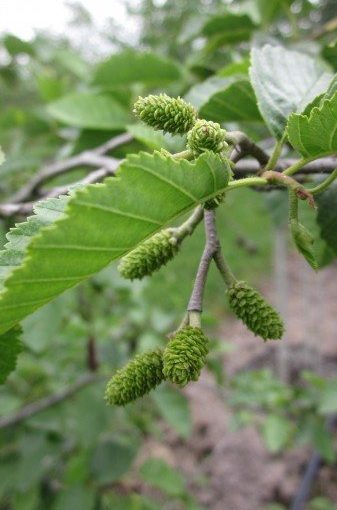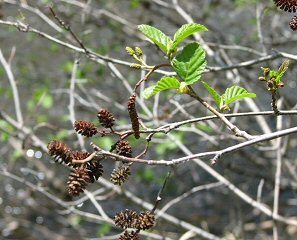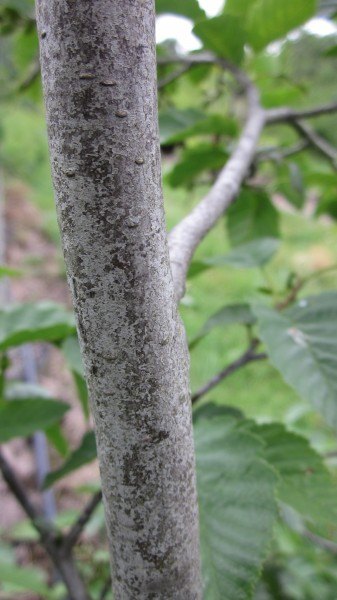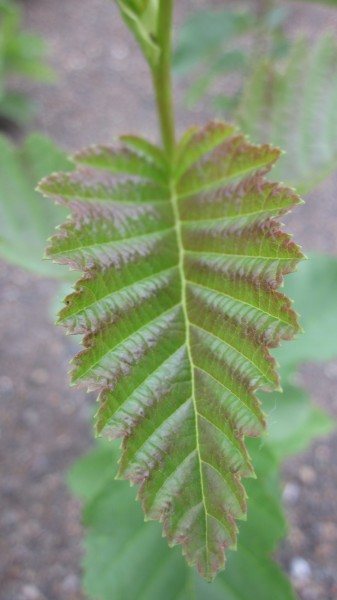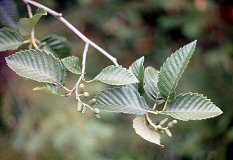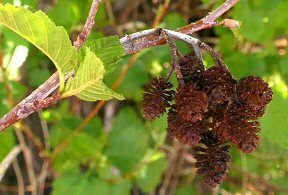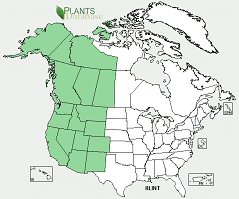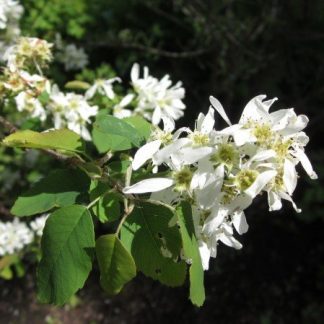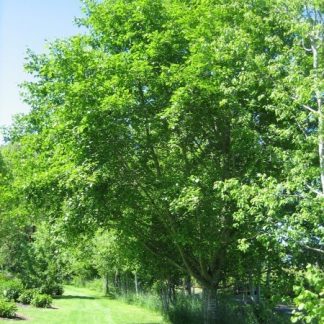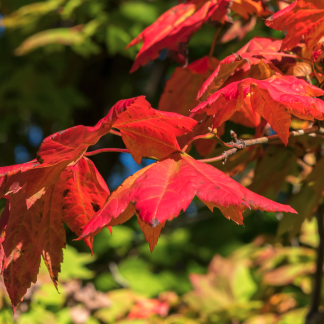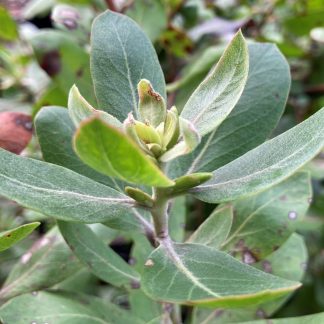Alnus incana ssp. tenuifolia
mountain alder
Habit: multi stemmed shrub or small tree 20-40 ft (6-12m), with an open, rounded form and spreading branches. It reproduces by seed, rhizomes, or root suckers and often forms thickets. The dull dark green leaves are thin and oval with doubly serrated margins. Bark is grayish-brown, thin, and smooth, becoming reddish-gray and scaly with age. Both male and female catkins are produced during the growing season prior to blooming. Catkins expand before the leaves emerge in the spring and flowering generally begins during March and April. Cone-like fruits enclose a very small winged seed that matures in late summer and persist through winter.
Ecology: mountain alder is typically a low to middle elevation 4000 to 7000 ft (1200-2100m) species occurring in moist mountain canyons, swales and open-canopy riparian stands; it is the most common alder in the mountains and is often in dense thickets. It has a shallow extensive root system making it a good choice for disturbed site rehabilitation, providing streambank stability and erosion control.
Growing Conditions: grows best in course to medium, nutrient rich, moist soils and sunny to lightly shaded areas. Mountain alder can tolerate floods but not drought. It is able to survive extremely cold winters.
Like other alders its root system develops nodules that fix atmospheric nitrogen. Alder seeds, buds, and catkins are considered to be an important winter food source for animals and various birds including, chickadees, and goldfinches.
Specs
Deciduous Tree/Shrub
20-40 ft (6-12m)
8 ft (2m)
5-9

